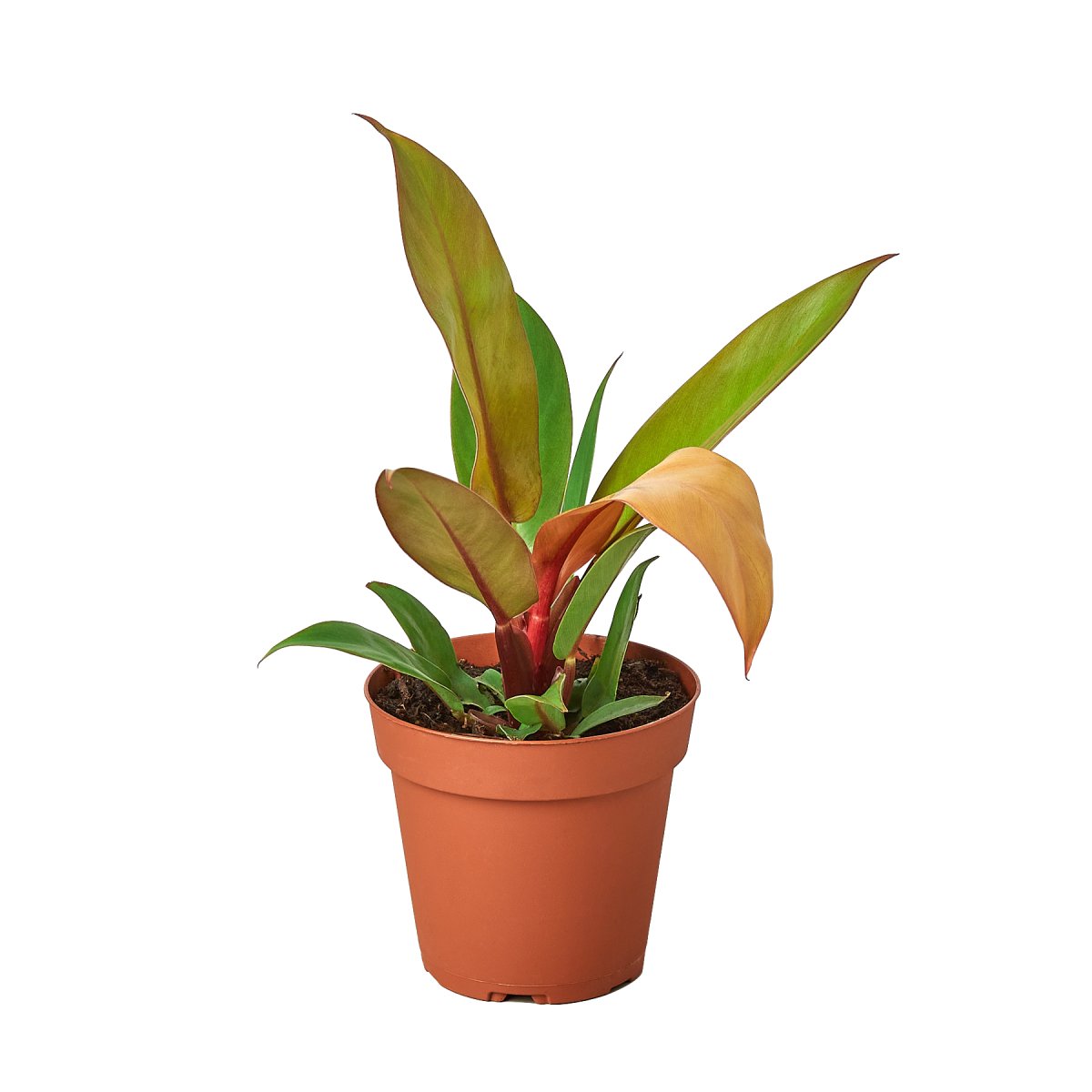Philodendron 'Prince of Orange'
Philodendron 'Prince of Orange'
Free Shipping on All Plants
The Philodendron 'Prince of Orange', scientifically a Philodendron erubescens hybrid, is a captivating houseplant cherished for its stunning foliage. The color of the uniquely hued leaves of Philodendron 'Prince of Orange' evolves over time, starting as a starburst yellow, then transitioning to copper tones, and finally settling into darker shades of green. With its compact growth habit, 'Prince of Orange' Philodendron typically reaches a height of 1-2 feet when mature. This makes it a self-heading hybrid that is a must-have for any plant enthusiast.
Botanical & Common Names
Botanical & Common Names
Botanical: Philodendron erubescens hybrid
Common: Prince of Orange Philodendron, Orange Prince Philodendron, Orange Philodendron
Necessary Care Tips
Necessary Care Tips
- Light: Bright Indirect
- Ideal Temperature: 65-80°F
- Humidity: High
- Water: When the top 2 inches of soil are dry
- Fertilize: Once a month during the growing season with a balanced fertilizer diluted to half strength
- Preferred Soil: Well-Draining Potting Mix
Advanced Care Tips
Advanced Care Tips
- They are one of the easiest plants to propagate, often requiring just a stem cutting placed in water or soil.
- Philodendrons prefer Bright, indirect light but can tolerate lower light conditions.
Plant Insights
Plant Insights
- Member of the Araceae family, also known as the Arum family, which is a large family of flowering plants that includes over 3,700 species.
- Philodendrons are native to tropical regions of the Americas, including the Amazon rainforest and other parts of Central and South America.
- Philodendrons are known for their air-purifying qualities and can help remove pollutants like formaldehyde and benzene from the air.
- A "self-heading" Philodendron refers to a type of Philodendron plant that grows upright and does not vine or climb in the way that some other members of the Philodendron genus do. Unlike the climbing or trailing varieties that require support to grow upwards and can spread out significantly if allowed, self-heading Philodendrons have a more compact, bushy growth habit, producing leaves from a central base or trunk.
- Unsafe / Toxic
- Medium Maintenance
Couldn't load pickup availability


Subscribe to our emails
Be the first to know about new collections and exclusive offers.

